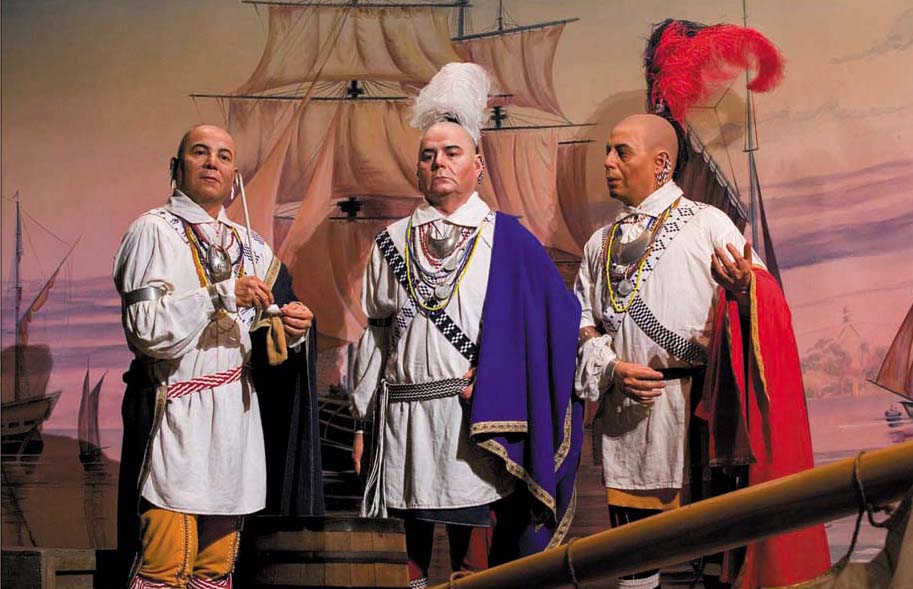15TH CENTURY CHEROKEE OF THE SWANNANOA VALLEY: TOWN LIFE IN THE MISSISSIPPIAN PERIOD II
Ancient Cherokee men hunted, fished, and traded
for their communities.
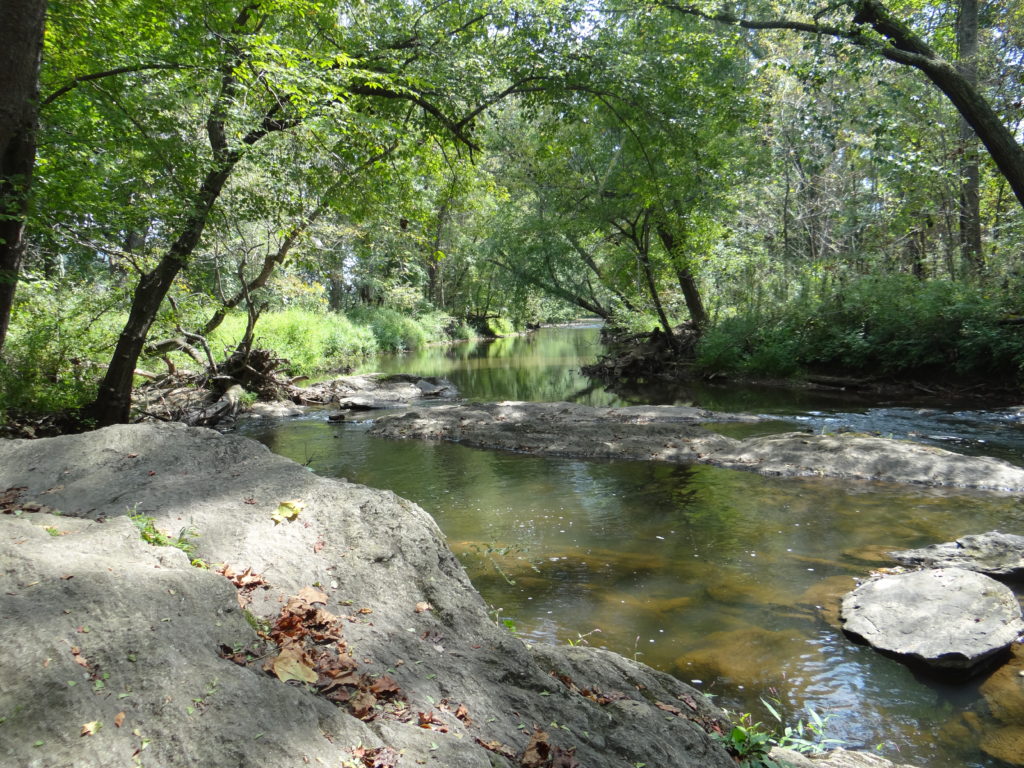
Men who lived in the town spent much of their time hunting and trading.
In the warmer months, a man might hunt deer, bear, wild turkey, and other small game such as squirrels, rabbits, opossums, and raccoons. In the Swannanoa River, he would fish and trap turtles.
Left: A contemporary view of the Swannanoa River at Warren Wilson College.
Some men in the town would have used the Swannanoa River to travel and trade with other communities in southern Appalachia, communities which were in turn connected to trade networks throughout the Americas. A few men in the town could have also served as community leaders and diplomats to neighboring communities.
Below: Conch shells (left) and shell beads (right) excavated at the town site are evidence of the extensive trading networks with which the people of the Swannanoa Valley were connected.
Images courtesy of Warren Wilson College Archaeology Department.
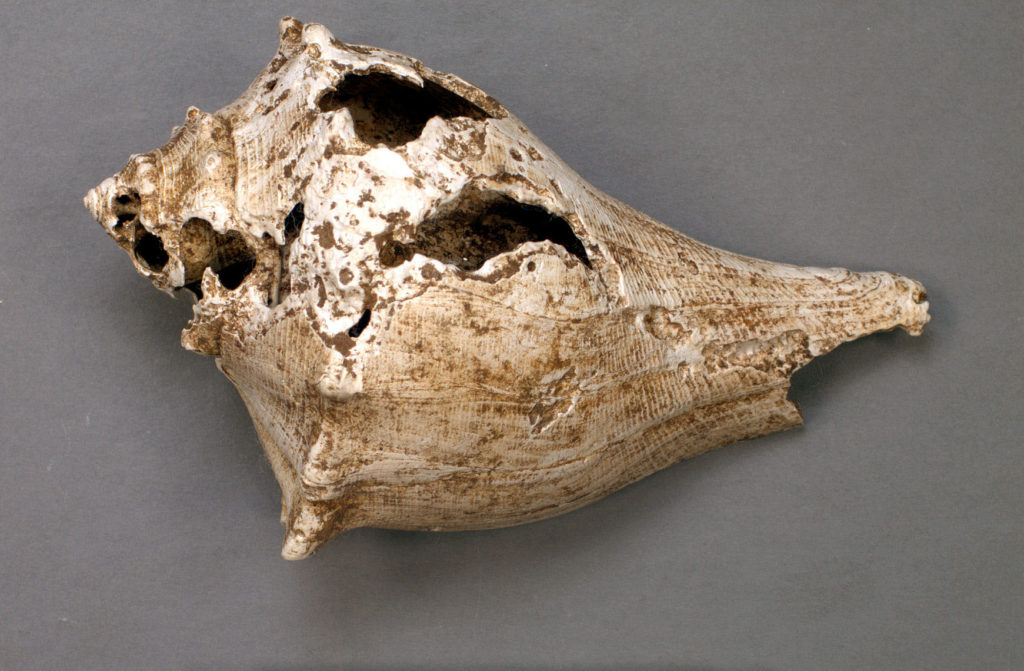
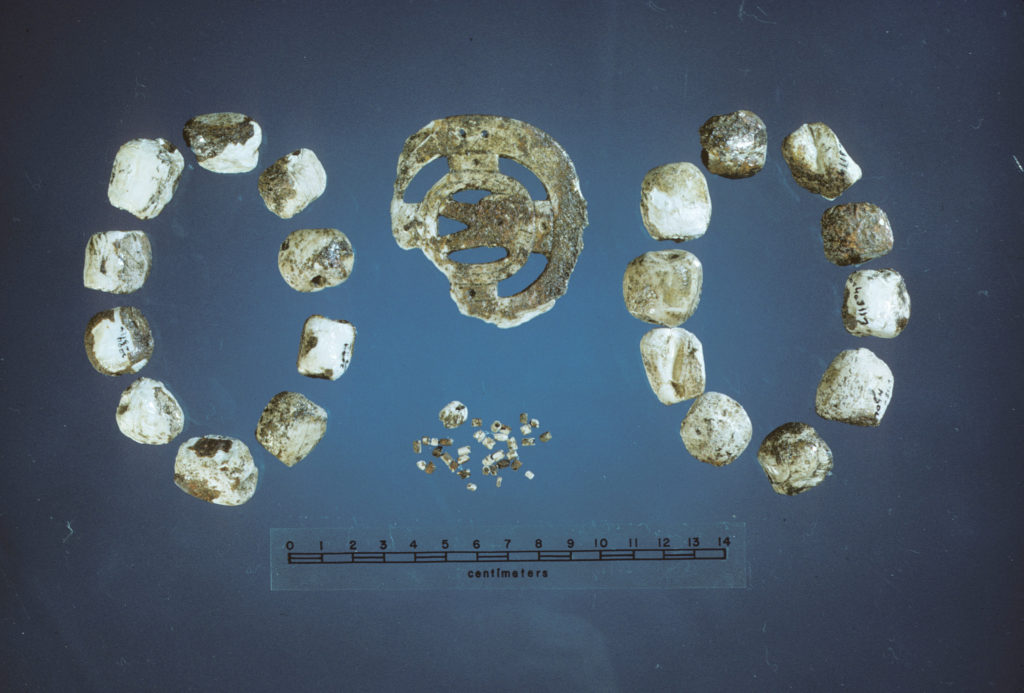
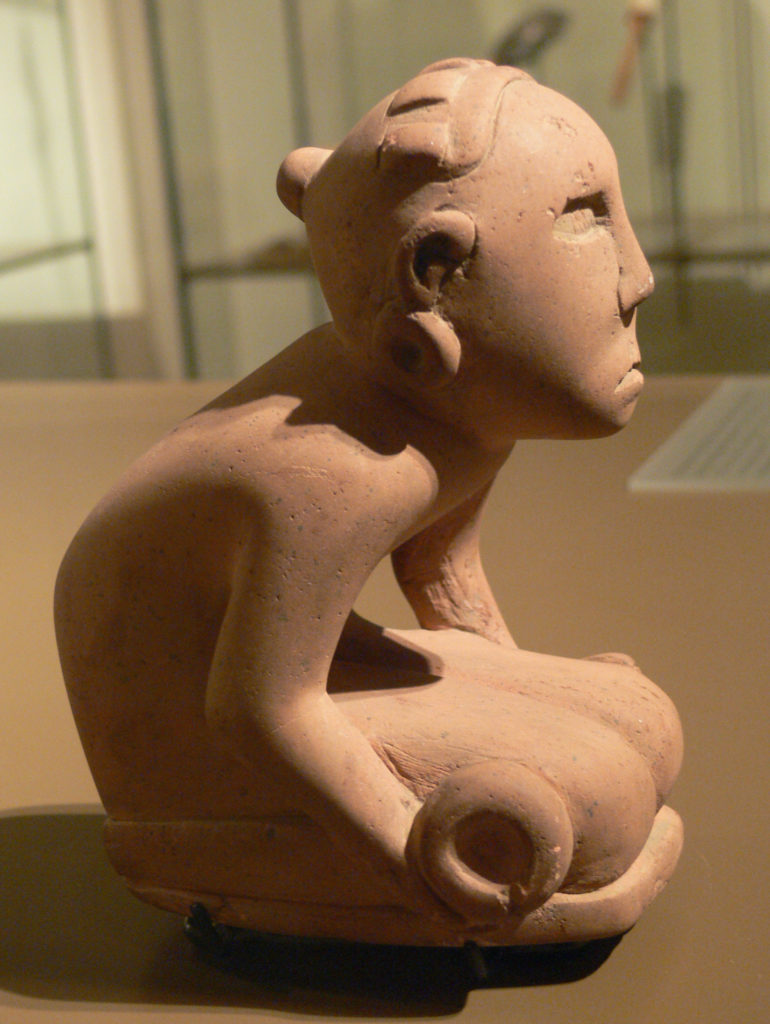
Many men in the town would have also enjoyed playing “chunkey,” a game that was popular across the Southeast. One player would roll a disc-shaped stone across the ground while other players threw spears at the stone in an attempt to land the spear as close to the stopped stone as possible. Games of chunkey could last for hours or even days in some cases, and gambling was a popular part of chunkey games.
Left: Mississippian culture pipe bowl from Georgia depicting a chunkey player holding a chunkey stone. Courtesy of the North America Department, Ethnological Museum, Berlin, Germany (Stolper collection, 1970).
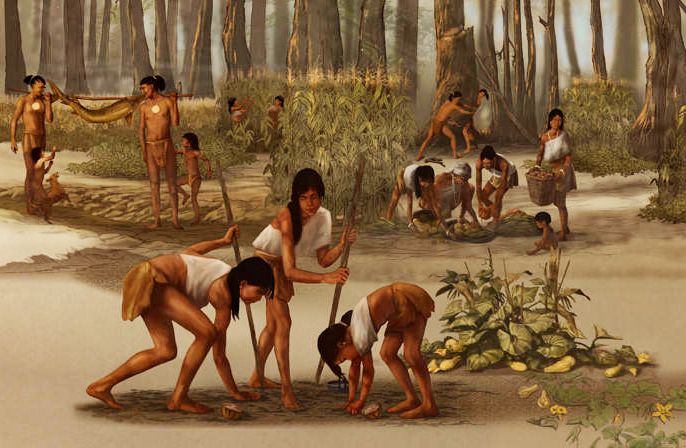
“At the heart of this culture was the idea of balance, of “duyuktv,” “the right way.” Men’s hunting and fishing, for example, was balanced by women’s farming. The rights of the individual were balanced with the good of the whole, resulting in great personal freedom within the context of responsibility to the family, clan, and tribe.”
– Barbara R. Duncan and Brett Riggs, Cherokee Heritage Trails Guidebook
“When we kill the deer–
our men kill deer–
they don’t waste any kinds of bones or antlers or the meat;
they share the meat.
Back a long time ago the village would be like this–
they shared their meat with one other,
and we don’t do that as much anymore.
Whenever we have bones,
they saved the bones for the knitting, for the crocheting,
and used all parts of the deer,
it’s not wasted.
And when they go hunting,
they only get one,
they don’t get all the deer out there.
And they save it for the next person.” Edna Chekelelee, Cherokee storyteller
The people in this community would never have met Westerners, but their descendants in the 16th, 17th, and 18th centuries would encounter Spanish and Anglo-American colonizers.
Left: Diorama depicting Cherokee delegates en route to London in 1762. Courtesy of the Museum of the Cherokee Indian.
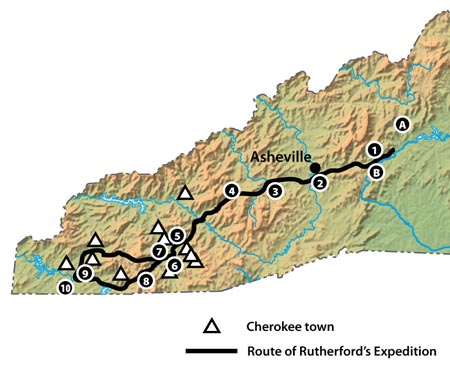
In the late 1700s, white settlers used the outbreak of the Revolutionary War as an excuse to invade and colonize the Swannanoa Valley and much of the Cherokee territory west of the Blue Ridge. In the fall of 1776, General Griffith Rutherford and 1,700 men entered the Swannanoa Gap and proceeded southwest in an extended raid against the Cherokee that would be remembered as Rutherford’s Expedition. By the end of the expedition, dozens of Cherokee towns were burned to the ground and hundreds of acres of corn crops destroyed, leading to the starvation and death of many Cherokee. By the end of the Revolution, white settlers began to arrive and claim land in the Swannanoa Valley.
Right: Image courtesy of NCpedia.org
